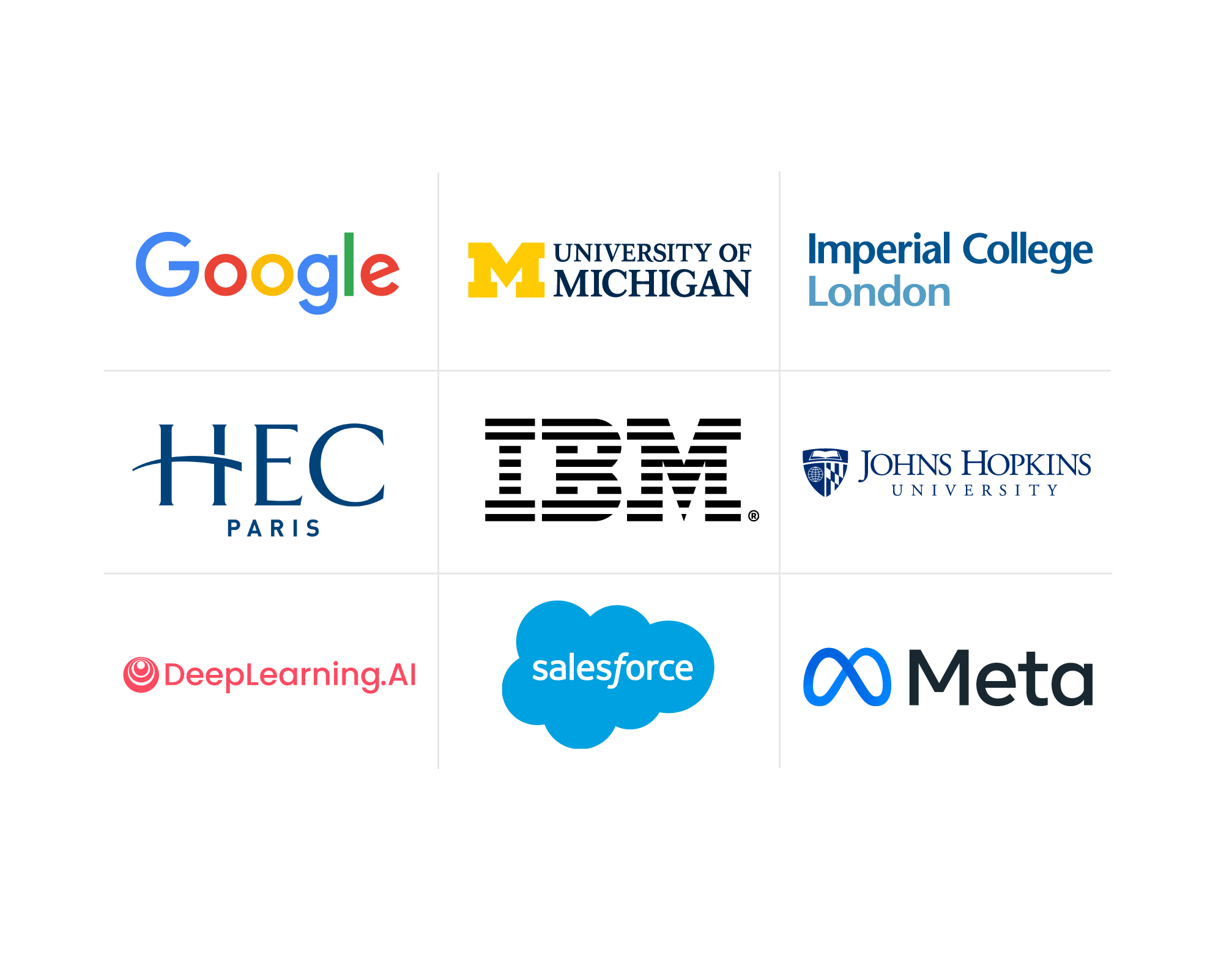Learning and Development Opportunities for Corporate Growth
Explore the vital role learning and development opportunities play in driving employee engagement and nurturing lasting corporate growth with the skill-building employees crave.

The workplace is arguably more complicated than ever, with “The Great Resignation” in the rearview. However, persistent restlessness among employees and the fast-paced evolution of technology demand that organizations essentially reinvent themselves, starting with a rigorous commitment to skill-building and professional development for the workforce.
According to LinkedIn's 2024 Workplace Learning Report, 90 percent of companies are learning on learning and development opportunities as their primary retention strategy, which has become increasingly critical as more employees want to learn about how they can use technologies like artificial intelligence (AI) in their jobs to help fuel innovation and organizational growth [1].
Research from the Chief Executive Group suggests that many organizational leaders view employee retention and engagement as their top 2024 priorities. The survey asked CEOs across all sectors about their top priority for 2024, and 60 percent of respondents answered “employee retention and engagement,” with higher percentages of leaders in industries like construction, engineering, and mining; health care, manufacturing, professional services, and government listing it as mission-critical [2].
Implementing robust learning and development opportunities can aid in that mission. Professional development and skill-building programs aid companies by providing a more skilled, capable workforce and increasing employee engagement. In turn, higher rates of engagement lead to improved retention.
Explore the importance of providing professional development programs to your employees and the many benefits doing so can offer, including sustained growth and organizational success.
What is learning and development?
This essential function empowers employees and supports improved business performance by aiding the development of skills and knowledge. Learning and development is an umbrella term, often also referred to as professional development, that helps employees with training—both ongoing for existing employees and as part of the onboarding process for new employees. It can also include compliance training, career development courses, and skill-building programs.
Learning and development opportunities typically help employees develop new skills with continuing education options like workshops, conferences, courses, and certificate or certification programs. Organizations may offer these learning opportunities in-house or by partnering with external sources and educational providers.
Read more: L&D: What Is Learning and Development?
The importance of professional development for employees’ success
Having a chance to learn new skills and gain knowledge can often boost employee confidence and foster a sense of loyalty to employers as workers get opportunities to improve their abilities and potentially find new avenues for career advancement. At the same time, learning development opportunities can also increase employees’ satisfaction with their current roles and foster improved collaboration in the workplace. It provides various additional benefits, including the following:
Ability to learn new skills helps support career aspirations and personal goals
Helps employees remain up-to-date with industry standards and emerging trends
Gain additional exposure to industry experts and new ideas
Feel more valued by employers and capable of working up the career ladder
Cultivate leadership skills while developing a robust professional network
The connection between skill-building opportunities and employers’ success
Innovation and the ability to evolve along with the changes in the work world are essential for organizations to remain competitive, and professional development opportunities support both points. Providing ample learning opportunities to employees increases the skills they need to thrive in their current roles while preparing them for career advancement. It shows that the company cares about investing in its workforce and can benefit organizations in the following ways:
Boosts employee engagement for stronger retention
Attracts new talent to help widen hiring abilities
Increases productivity to ultimately support health profits
Helps bridge the skills gap for a more capable workforce
Skill building for a competitive workforce
Having access to learning and development opportunities can increase employees' connectedness to the company, with 80 percent of LinkedIn's 2024 Workplace Learning Report respondents noting that it adds purpose and significance to their roles [1]. Developing your employees’ skills and ensuring they have the right skills at the appropriate time to complete their tasks successfully is essential. Yet, despite the vital nature of professional development, many organizations still struggle to advance their initiatives.
Consider the following steps to help you create a thriving learning and development strategy that can support your workforce and bolster success.
1. Conduct a needs analysis
Before you can adequately connect employees with learning opportunities, it’s imperative to know what your organization needs in terms of skills and knowledge and identify the areas in need of improvement. To accomplish your needs analysis or a skills gap analysis, you could use one or several methods to determine the needs individually, including manager assessments, employee self-assessments, or peer assessments.
You’ll also need to pinpoint the company’s long-term and short-term goals along with the critical skills required to achieve them. From there, you must evaluate each team member and compile data about the skills the organization collectively has now and those it needs to meet those organizational goals you’ve developed. Additionally, you must be willing to reevaluate these needs periodically to ensure your learning and development efforts remain aligned with the company’s ongoing and evolving needs.
2. Create an action plan
Hiring and outsourcing are two possible ways to help close the skills gaps you may have uncovered during your needs assessment. In some instances, that may make sense. Even better, however, is to invest in current employees when possible, which will help engage the workforce and show them that their employers care. Engage leadership and stakeholders to devise a cohesive strategy to build critical skills and support a thriving business.
3. Devise learning and development opportunities
Professional development programs can use multiple formats to support upskilling and encourage continuous learning. Ideally, it will take a broad, diverse, multidisciplinary approach that provides some learning opportunities made accessible in employees’ workflows. To accomplish this, consider integrating microlearning, or learning that workers can complete in small chunks of time throughout the workday in the plan. You may also consider incorporating a combination of in-person opportunities and other options to learn using digital formats.
4. Personalize the approach
Matching the right employees with the appropriate learning opportunities helps optimize skill-building initiatives. Provide personalized options, like on-demand learning, to help workers meet their potential and explore their interests according to their professional ambitions.
5. Support employees in their pursuit of higher education and certifications
Employees who return to school or engage in certification programs benefit from staying abreast of the latest knowledge, techniques, and skills advancements. Doing so can help them cultivate durable skills that last a lifetime, and the organization will benefit from improved critical thinking, problem-solving, and the ability to adapt to changing business environments.
Read More: Fostering a Learning Culture within Your Company

Measuring the impact of learning and development opportunities
As you execute and scale your learning and development initiatives, some of the metrics you may focus on elements like the cost per person. However, several key performance indicators (KPIs) can give you a better sense of your professional development strategies' success. To get a better understanding of how these strategies are impacting business performance, it helps to look at KPIs such as:
The alignment between learning and development opportunities and business objectives
Whether learning opportunities improve employee behavior and performance
Data surrounding attendance and completion
Productivity metrics like operational costs and project timelines
Remain aware of potential challenges associated with professional development programs
As pointed out above, providing your workforce with learning and development opportunities offers multiple benefits for your employees and your organization. Having an awareness of the limitations or challenges you may come across is essential to developing effective strategies and overcoming potential drawbacks. Some of the difficulties associated with learning and development programs include:
A resistance to organizational change, which you can overcome by ensuring opportunities remain aligned with purpose and employees’ needs
Difficulty engaging busy learners, which you can mitigate by incorporating more on-demand and microlearning opportunities, as well as ensuring its relevance for employees' daily activities
Consistent delivery despite geographic limitations, which you can resolve with the use of multi-platform communication methods, providing real-time feedback, and scheduling routine check-ins
Demonstrating return on investment (ROI) to leaders and stakeholders, which you can provide using ongoing skills gap assessments and KPIs to demonstrate progress
Develop your talent with Coursera
Developing robust learning and development opportunities can benefit employees by aiding them in developing their skills, improving their confidence, and demonstrating the organization’s investment in its workforce.
Promote leadership skills throughout your organization by developing employees who innovate and inspire. With the Leadership Academy from Coursera, employees can learn the skills needed to lead your business into the future. Through Coursera for Business, you’ll build effective managers at every level with beginner and advanced-level leadership content, including 40+ SkillSets to drive soft skill proficiency across the entire organization.
Article sources
1. LinkedIn. “2024 Workplace Learning Report, https://learning.linkedin.com/resources/workplace-learning-report.” Accessed October 24, 2024.
2. Chief Executive. “New CEO Survey Finds Retaining and Engaging Employees Remains Top Priority and Challenge for 2024, https://chiefexecutive.net/new-ceo-survey-finds-retaining-and-engaging-employees-remains-top-priority-and-challenge-for-2024/.” Accessed October 24, 2024.
This content has been made available for informational purposes only. Learners are advised to conduct additional research to ensure that courses and other credentials pursued meet their personal, professional, and financial goals.


